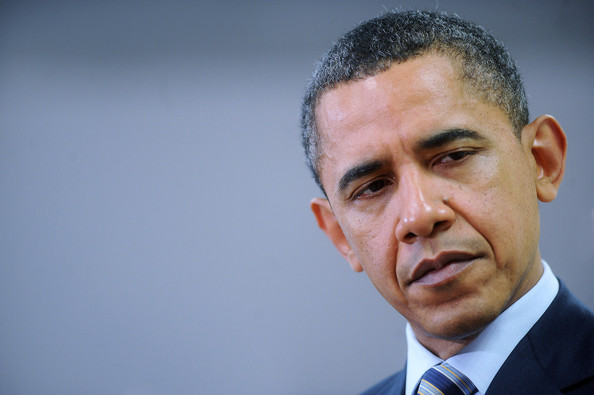Washington's New Massive Snooping Plan – 'Biosurveillance'
WND
WASHINGTON – First there were satellites in the sky that could read license plates from space.
WASHINGTON – First there were satellites in the sky that could read license plates from space.
Then there were cameras on every major street and highway.
Then there were full-body scans at airports.
Then came the proliferation of drones over the skies of America.
Barack Obama announced today the next phase of government national surveillance – with a budget of billions.
It’s called “the National Strategy for Biosurveillance.”
But, don’t worry, it’s all for the public good, health and safety, officials say.
The announcement came in the form of a short press release from the White House press secretary today:
“As a nation, we need to protect the health and safety of our people from naturally occurring or intentional threats. Early threat detection and sustained situational awareness are critical to saving lives and improving outcomes when there is a national health emergency. The administration’s new National Strategy for Biosurveillance aims to unify national effort around a common purpose and establish new ways of thinking about providing information to enable better decisionmaking.
“The strategy promotes an all-of-nation approach that brings together federal, state, local, and tribal governments; the private sector; non-governmental organizations; and international partners to identify and understand threats as early as possible and provide accurate and timely information to support life-saving responses. The strategy calls for focusing on the most important information, and shaping the enterprise to meet that need, so that we can do more with less.
“The strategy emphasizes four key biosurveillance functions which are critical for the effectiveness of the biosurveillance enterprise. They are:
- Scan and Discern the Environment
- Integrate and Identify Essential Information
- Alert and Inform Decisionmakers
- Forecast and Advise Impacts
“Advances in technology, the advent of social media, and new science provide opportunities to strengthen our national biosurveillance enterprise. As a next step, during the next 120 days, the administration will lay out specific action steps going forward in an implementation plan. It is by working together that we can best promote the resilience of the nation and act to protect the American people.”
But what does it all mean?
It’s one more way America’s life changed as a result of the Sept. 11, 2001, attacks on the homeland.
A few days ago, PositiveID Corp., which describes itself as “an emerging growth company and developer of sophisticated airborne bio-threat detection systems for American’s homeland defense,” announced it was preparing a request of $3.1 billion from the Department of Homeland Security for ‘BioWatch Generation,’ an early warning system designed to detect the intentional release of airborne biological agents.”
The Department of Homeland Security already uses 600 secret air filters to detect lethal pathogens – either naturally occurring or those intentionally released in a bio-attack. Local health officials in the roughly 30 cities that have the filters manually retrieve them every day and take them to labs for testing. But, if terrorists released something deadly into the air, it would still take about 36 hours before the toxin was identified.
PositiveID seeks to sell to Homeland Security computerized “labs-in-a-box” that that can quickly detect deadly pathogens in the air anywhere.
The Obama administration wants to upgrade the technology, known as BioWatch, to cut the response time to six hours or less. Estimates to buy and maintain the new sensors have surged to $5.7 billion – six times the initial price tag.
The 2,500 new sensors and bio-attack alert system Homeland Security wants to buy from PositiveID or other companies would be fully automated. Air sniffers would collect samples at least four times a day, and an internal computer would run a DNA test on the particles for traces of anthrax, smallpox, Ebola, and other pathogens. The so-called labs-in-a-box would then send the results immediately over a secured network to local and federal officials, who would verify them and dispatch drugs to hospitals in the event of an attack.
According to reports, Homeland Security has already spent at least $30 million trying to develop the new system. It was originally scheduled to go live this month, but a series of bureaucratic delays and tech glitches have held up progress.
PositiveID and Northrop Grumman say they’ve worked through these problems and Homeland Security is ready to open bidding on a $3.1 billion contract for the labs-in-a-box before October.
Under Homeland Security’s plans, 2,500 labs would be installed in 30 cities, including Boston, New York, Las Vegas, and Houston.
The BioWatch program began 10 years ago – in the aftermath of the anthrax scare on Capitol Hill and at major media outlets. Over the last decade, however, there have been many false alarms and other problems that have led some to question the efficacy of expanding the program. In that time period, the government concedes that of the dozens of Biowatch “actionable results,” none were connected with evidence of bioterrorism or even cases of human illness.
But that hasn’t stopped plans to greatly expand the program in the form of billions of dollars.
One of the problems for the program, according to the National Academy of Sciences, is that pathogens and their close genetic relatives exist naturally in water and soil.
“Distinguishing natural background levels of endemic agents from a bioterrorism threat and separating genetic ‘near neighbors’ from the target agent present technical challenges,” reports the academy.
BioWatch has already cost the U.S. taxpayers approximately $1 billion. The next phase – Generation 3 – is expected to cost $3.1 billion over the next five years. These costs, along with perceived false alarms, have led some to question whether the program is a potential waste of funding or research.
